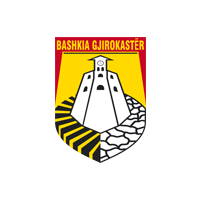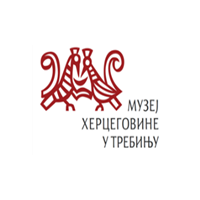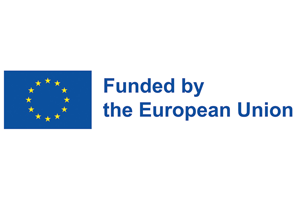Authentic Craft Heritage of Gjirokastra
Stonework
Gjirokastra’s very nickname—“the stone city”—springs from the mastery of its masons. For centuries they quarried, cut and chiseled local limestone and schist into the stout facades, cobbled streets and layered slate roofs that still define the town. Each block was shaped with painstaking care to signal the household’s strength and social standing. Stone-working skills passed directly from master to apprentice, preserving both technique and architectural identity.
Symbolism: endurance, resilience, and a distinct architectural identity.
Woodwork
Inside Gjirokastrite homes, ornately carved ceilings, doors, windows and built-in cupboards reveal a parallel tradition of fine woodworking. Artisans incised floral, geometric and protective motifs into walnut or chestnut, creating interiors that spoke of elegance, family prestige and spiritual safeguarding. Knowledge ran along family lines, reinforced by daily practice in small workshops.
Symbolism: elegance, family identity, protection and prosperity.
Copperwork
Local coppersmiths hammered kettles, trays, coffee pots and serving bowls for everyday use and for a bride’s dowry chest. Each vessel was planished to a mirror sheen, then chased with ornamental patterns recalling local history and folklore. Copper items symbolised purity and abundance and featured prominently in festive meals and family rites.
Symbolism: cleanliness, plenty and continuity of family tradition.
Textiles & Embroidery
Women working at upright looms wove wool or cotton into rugs, curtains, covers and elaborate garments. Many pieces were then embroidered with silk, metallic thread or cotton in floral or geometric designs that conveyed beauty, status and spiritual protection—especially during weddings. These skills formed a key part of a young woman’s education and dowry.
Symbolism: beauty, social rank, identity and safeguarding.
Crochet (Hook-work)
Crochet expressed domestic refinement: delicate tablecloths, napkins, cradle covers and infant garments featured patterns inspired by daily life. Mothers taught daughters stitch by stitch, and displaying fine crochet signalled hospitality and familial care.
Symbolism: delicacy, elegance and warm welcome.
Safeguarding the Tradition
Across all crafts, transmission relied on direct apprenticeship—most often within the family. Today, local fairs, cultural workshops and tourism initiatives help veteran masters pass their expertise to the next generation, ensuring that Gjirokastra’s material heritage remains a living practice rather than a museum piece.
- Historical Evolution of Gjirokastra’s Craft Heritage
Ottoman Era (15th century – early 20th century)
Under Ottoman rule, Gjirokastra blossomed as a regional administrative and trading hub. Master masons quarried and chiseled local limestone and schist into the robust facades, cobbled streets and layered slate roofs that still define the “stone city.” Inside these homes, carpenters carved intricate wooden ceilings, doors and cupboards, while coppersmiths hammered trays, coffee pots and cooking vessels destined for everyday use and bridal dowries. Household looms and embroidery frames produced finely woven fabrics and ornate needlework, ensuring each family’s garments and linens bore distinctive floral or geometric motifs.
Kingdom of Albania (1928 – 1939)
Modernising influences reached Gjirokastra, yet traditional craftwork remained integral to building projects and domestic life. Stone- and wood-working skills continued to adorn new civic buildings, whereas women preserved weaving and embroidery as indispensable parts of a young bride’s education and social status. Although small machines began to appear, most production still relied on hand tools and inherited techniques.
Communist Period (1945 – 1990)
After 1945, the socialist state consolidated crafts into centrally managed enterprises. The Gjirokastra Artistic Craft Enterprise (active 1960s-1980s) gathered veteran masters to produce carpets, embroideries, carved wood and copperware for domestic markets and export. Apprenticeship became more formal, with experienced artisans training cohorts of young workers inside state workshops. Standardised designs dominated, yet the core techniques of stone carving, wood inlay, metal planishing and loom weaving were carefully preserved.
Post-Communist Transition (1991 – 2000)
With the closure of state enterprises, many craftsmen lost guaranteed employment. Some migrated; others reopened family workshops, reviving authentic styles and adapting to a fledgling market economy. Tourism was limited, but the first private guesthouses and souvenir stalls began ordering handmade textiles, crochet pieces and decorative copper items, offering artisans a modest new clientele.
Contemporary Era (2000 – present)
Gjirokastra’s 2005 inscription on the UNESCO World Heritage List marked a turning-point. Restoration projects demanded traditional stone and wood skills; cultural festivals and craft fairs multiplied; and NGOs organised training to pass endangered techniques from elderly masters to younger generations. Today, visitors can watch coppersmiths hammer trays in tiny ateliers, see weavers raise brightly patterned rugs on upright looms, or observe masons fitting slate tiles onto centuries-old roofs—evidence that the city’s craft heritage remains a living, evolving practice.
.
Principal Documentary Sources
- Albanian State Archives – records on craft enterprises during the socialist era.
- UNESCO Reports on Gjirokastra (2005–2020) – heritage assessments and recommendations.
- Institute of Cultural Anthropology & Art Studies, Albanian Academy of Sciences – ethnographic studies.
- Gjirokastra Ethnographic Museum – artefact catalogues and oral testimonies.





